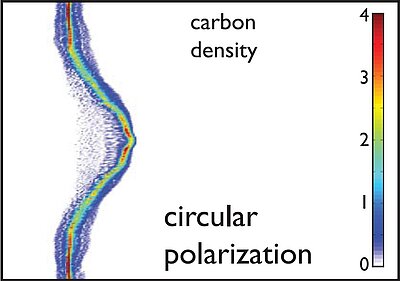The directed acceleration of ions with lasers is one of the current challenges in the field of light-matter interaction. This process can be realized by a series of laser-induced phenomena in the plasma, but specifically by the transfer of the directed pulse of the laser field, the so-called light pressure.
Light pressure - the path to efficient ion acceleration with lasers
The use of light pressure requires enormous demands on the laser intensity and the temporal shape of the laser pulse. For this, the theory predicts a large energy transfer from the laser field into the ion beam to be generated and a rather narrow energy distribution, which are both prerequisites for many applications.
Physicists of the Max Born Institute (MBI) in Berlin and the Max Planck Institute for Quantum Optics (MPQ) in Garching and the LMU in Munich were now able to apply this principle in experiments (Phys. Rev. Lett. 103 (24), 245003 (2009)) demonstrate. The key to success lies in the preference of the momentum transfer between the laser field and the target while at the same time suppressing unwanted heating of the electrons in the target. This is achieved by generating laser pulses with an ultra-high temporal contrast (by the high-field laser of MBI-Berlin) irradiating ultra-thin diamond films (manufactured at the MPQ / LMU). The results demonstrate an efficient ion beam generation while simultaneously reducing the kinetic energy distribution of the ions.
Search publications of MBI
Publications since 2025
